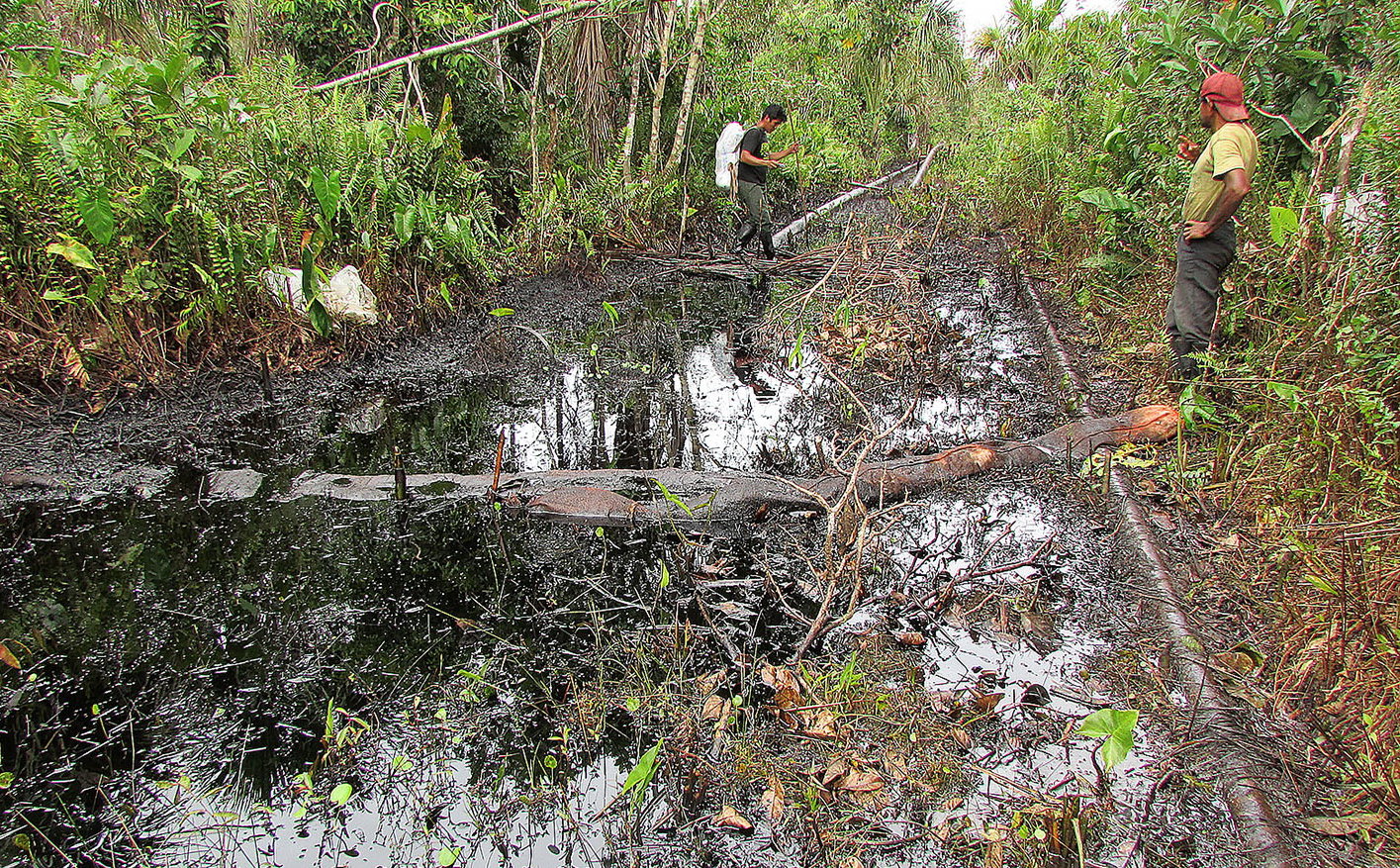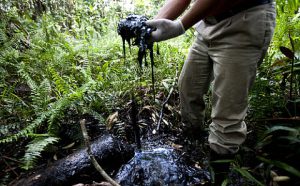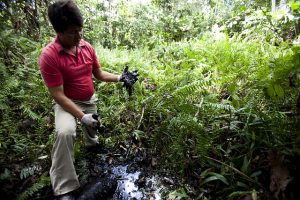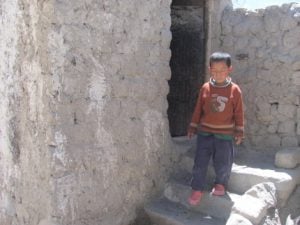China’s largest oil and gas producer, China National Petroleum Corporation (CNPC), is set to take over more than one million hectares of Peru’s Amazon if a US$2.6 billion deal is approved.
The deal – announced last month by PetroChina, a listed company in which CNPC is the controlling shareholder, and Brazil’s state oil and gas company, Petrobras – is already arousing concerns about its potential impact on indigenous peoples, the environment and future control of resources in the region.
According to company statements, the deal must be approved by both Peruvian and Chinese governments and it involves the sale by Petrobras’s Peru subsidiary of 100% stakes in one oil and one gas concession and a 46% stake in another gas concession to two PetroChina subsidiaries.
The oil concession, Lot X, is in Peru’s northern desert region which, according to Perupetro, the state agency promoting oil and gas operations, was the second most productive oil concession in the country in 2012. It is extremely close to two other concessions operated by another CNPC subsidiary, Sapet, which were acquired in the early 1990s, marked CNPC’s first foreign oil production, and together were Peru’s fifth most productive concession last year.
By contrast, the two gas concessions are both in the south-east of the country in the Amazon rainforest. The concession in which PetroChina will have a 100% stake is Lot 58, a 340,133 hectare area where Petrobras announced it had made a discovery last year.
The other concession, Lot 57, is majority-owned by Repsol where, according to a 4 December Perupetro statement, production will begin ‘in the next few weeks.’
Lot 57 and Lot 58 are contiguous and in a highly sensitive Amazon region inhabited by indigenous peoples including the Asháninka, Caquinte, Machiguenga and Yine.
Immediately to the east are two other concessions, Lot 88 and Lot 56, both run by Pluspetrol and together known as the Camisea gas project. These two concessions constitute Peru’s biggest ever energy development and plans are currently afoot to expand operations in Lot 88, despite serious criticism of social and environmental impacts such as forced contact with indigenous peoples in ‘voluntary isolation’, gas leaks, declining fish stocks, alcoholism, and the arrival of new illnesses including HIV/AIDS.
‘PetroChina’s challenge is to help create truly sustainable development in the indigenous communities in Lots 57 and 58, implement transparent policies of compensation and negotiation, and continue to support and strengthen their environmental monitoring programs,’ said Vanessa Cueto, from Peruvian NGO DAR. ‘The company must participate actively in dialogue organised by the state, and broaden its social responsibility policies to meet the needs and cultures of local people. It must be aware that their main needs revolve around health and education, and it must apply the highest social and environmental standards in a region of such high cultural and biological diversity.’
China’s Amazon pipeline plans
CNPC is already involved in at least two other concessions in Peru’s Amazon, Lot 1-AB and Lot 8, both of which are run by Pluspetrol and were two of Peru’s most productive oil concessions in 2012. CNPC has held 45% stakes in both lots since 2003, meaning that if the Petrobras deal is approved, CNPC will operate across more than one million hectares of Peru’s Amazon and it will be running or participating in four of the country’s five most productive oil concessions.
It has also been reported, by Peruvian newspaper Gestion, citing an anonymous source who ‘was in contact with PetroChina representatives during a recent visit to Lima’, that PetroChina could buy a consortium called Kuntur Transportadora de Gas which has a contract to build a pipeline network from the Amazon to Peru’s coast.
‘That looks like a Chinese strategy to control the entire process, from the exploitation, to the transportation and the processing,’ says Carlos Aquino, an economist at Peru’s San Marcos University. ‘China wants to secure supplies of raw materials and is on track to become the biggest producer of oil and maybe of gas in Peru. We have very close economic ties and in Chinese eyes Peru is a relatively easy country in which to do business, although that’s not to say there aren’t problems.’
Environmental concerns
Although companies have operated in Lot 1-AB and Lot 8 many years before CNPC became involved, the government declared three ‘environmental emergencies’ in three river basins this year after ‘life threatening levels of heavy metals and hydrocarbons were found in soil and water sources’, as Peru-based NGO Alianza Arkana described it.
In addition, there have been over 100 spills in the last five years, according to a collective of indigenous federations called PUINAMUDT, and Pluspetrol was recently fined more than US$ 7 million for environmental damages.
‘I’ve personally witnessed the serious environmental problems that exist in this region as a result of oil activity,’ the UN’s Special Rapporteur on Indigenous Peoples, James Anaya, told a press conference in Lima on 13 December after a brief visit. ‘This includes the contamination of water and soil used by the indigenous people and which is affecting their health and food sources.’
Monopoly fears
CNPC’s expansion in Peru is part of a rapid, much wider expansion by Chinese firms in Latin America and the world, and the oil and gas industry in particular. According to Reuters, Chinese oil firms ‘have spent some US$100 billion [since 2009] to buy oil and gas fields, in Latin America and elsewhere’ and in Peru’s neighbour Ecuador they have established a ‘near monopoly control of crude exports’, with ‘state-controlled firms. . . allocated 83% of Ecuador’s oil exports’ in mid-2013 and ‘about 60% of these oil shipments. . . handled by PetroChina.’
Indeed, China’s power is so extensive that some argue Ecuador has compromised its own sovereignty following a deal allowing China ‘to seize almost any assets short of military equipment in the event that Ecuador falls into arrears with payments’, according to Analytica Investment.
A key reason for China’s expansion is its growing domestic need for raw materials, but as Reuters’ research shows, oil bought by Chinese firms doesn’t necessarily end up in China:
‘Although China’s oil imports are rising – they reached around 6.3 million barrels per day in September – several of its state oil firms now trade more oil abroad than they import to China, an official told Reuters last month. . . It is perfectly legal for PetroChina, the world’s No. 2 publicly-traded oil firm, to enlist traders to market Ecuador’s crude, little of which is shipped to China.’
‘At one level there’s a raw need for resources because China has become the world economy’s industrial powerhouse,’ said Stephen Diamond, associate professor of law at Santa Clara University in the US. ‘But there’s a geopolitical piece to this too. They’re either trying to exploit alliances with certain types of regimes, or they have a motivation for strengthening those regimes. It’s no surprise they’re working with [President Rafael] Correa in Ecuador. If the Chinese can build up a strategic alliance, they can offer an alternative sales outlet for their oil and technologies and help move Ecuador away from the USA or Europe. That would benefit China’s economy beyond just raw materials.’
PetroChina and CNPC controversy
Both CNPC and PetroChina have also attracted considerable controversy for their domestic conduct recently – with one announcement that PetroChina will be sued for illegally disposing drilling waste in Jilin province, and another that CNPC has been found guilty of environmental misconduct by China’s Ministry of Environmental Protection. In addition, PetroChina has found itself at the heart of a domestic corruption scandal, which led to three senior officials resigning in August and a lawsuit being filed against the company in the US.
‘Petrochina’s a true giant of the corporate world and has been at the forefront of the Chinese government’s ‘going out strategy’ over the past decade,’ said Lizzie Parsons, from NGO Global Witness. ‘It operates in several high risk countries such as Niger, Chad, Iraq and South Sudan, and in some cases it operates according to the best international standards.’
Petrobras declined to comment on its sale to PetroChina, and neither PetroChina, CNPC nor Peru’s Ministry of Mines and Energy could be reached.








